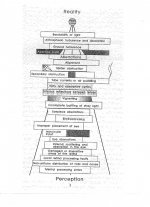Hi all,
Just wanted some clarification on the transmission of light through binoculars. My understanding is that transmission (%) is the amount of light that will pass through to your eyes. Glass quality, coatings, number of surfaces etc all play a factor.
My question is, will transmission be different for two given binoculars equally constructed the same, but with different magnifications and objective sizes?
For example - an 8x56 vs an 8x30 from the same manufacturer/line, lets say both Nikons for argument sake. Will the transmission value be better on the binocular with larger exit pupil?
Just wanted some clarification on the transmission of light through binoculars. My understanding is that transmission (%) is the amount of light that will pass through to your eyes. Glass quality, coatings, number of surfaces etc all play a factor.
My question is, will transmission be different for two given binoculars equally constructed the same, but with different magnifications and objective sizes?
For example - an 8x56 vs an 8x30 from the same manufacturer/line, lets say both Nikons for argument sake. Will the transmission value be better on the binocular with larger exit pupil?







